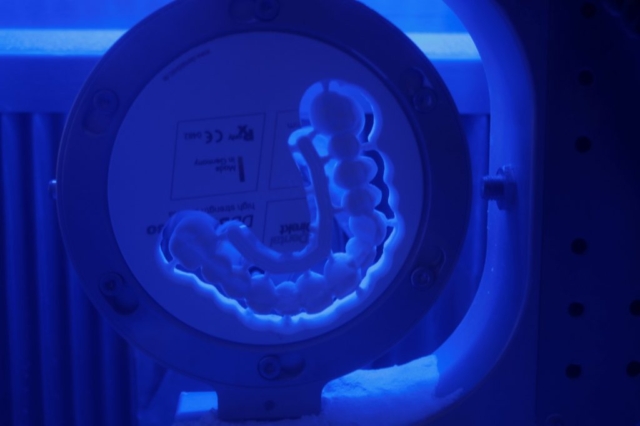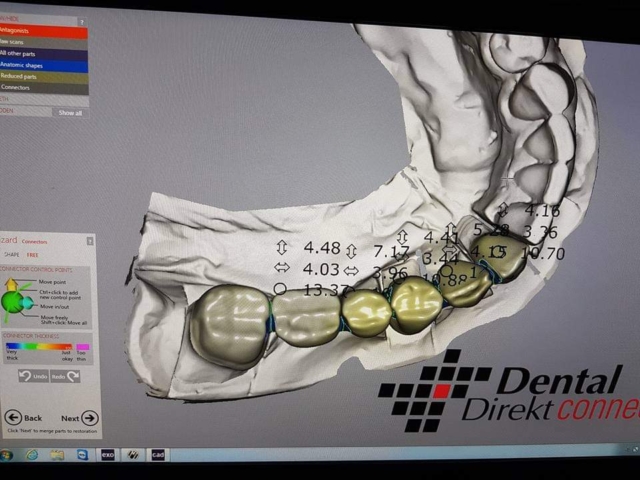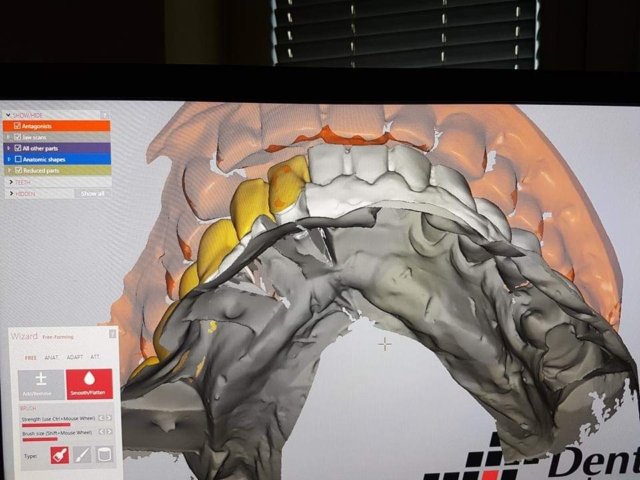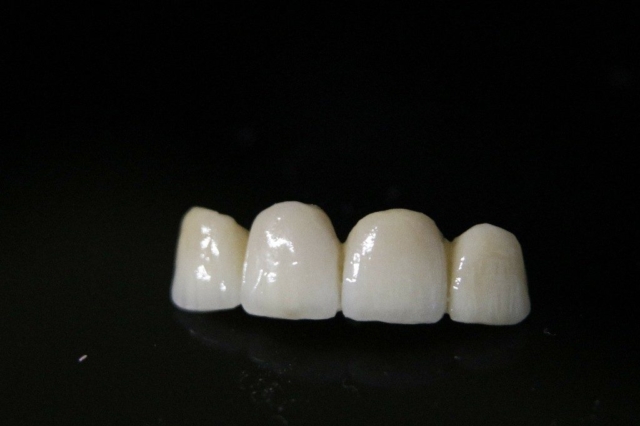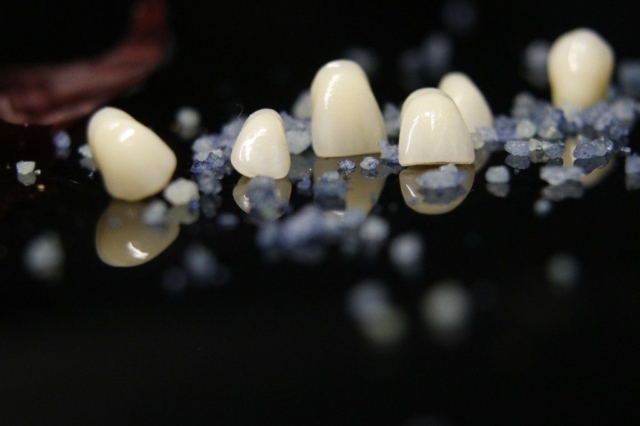
Prosthetics and Aesthetics
Not one branch of dentistry exists that is conducted in our clinic that goes without considering the aesthetics. Aesthetics play a major role in dentistry procedures.
Dental prosthetics is meant for all those that require one or more missing tooth or they are not satisfied with the aesthetics of their current ones.
All prosthetic procedures that are conducted in our laboratory are conducted with the highest world standards in mind.
We use the most sophisticated technology when it comes to producing a Porcelain fused to metal crowns and bridges or the most quality zirconium.
Types of prosthetic procedures
You can find out more about different types of procedures below on which you can decide.
If you want to find out which is the best option for You, give us a call and schedule a free consultation with our experts.
Porcelain fused to metal crowns and bridges
Producing fixed prosthetic works begins with natural tooth drilling (future carriers of the prosthetic works)
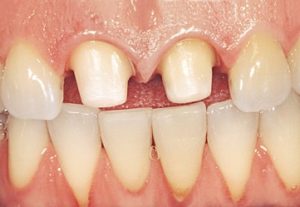
After tooth drilling a dental print is taken and a model of reshaped teeth is constructed.
The model is scanned with a 3D scanner and transferred into a digital query.

Next, the digital query is accessed, analyzed in ways how to best contribute to the desired aesthetic and function.

After achieving the desired design and routine checks of all static elements required for the longevity of the future prosthetic and its eventual upgrade, then the highly precise CNC machine begins the production.
Metallic constructs are manufactured with CADCAM technology from sinter metal blocks of the highest quality from the German manufacturer, WHITEPEAKS.

Furthermore, the refined construct is then sintered in sintering ovens in a very finely tuned and monitored environment ranging from controlling the sintering atmosphere to prevent unwanted oxidation of the metal.
The finest Vita ceramics is applied on the sintered metal.
In that order, we receive the most quality porcelain fused to metal construct that satisfies the highest world standards of quality and precision.


All-ceramic or all-porcelain crowns, Aesthetic zirconium brackets; Crowns and bridges
Instead of a metal construct in the making of crowns and bridges, it’s possible to use modern Zirconium constructs.
The production of these types of procedures begins with tooth reshaping of the natural teeth, their imprinting, producing a model, its scanning and digital scanning.




As a final result, the most perfect prosthetic works are produced, sophisticated, aesthetic and highly biocompatible.
The zircon transparency is the most important aspect of this material, thanks to which we get the most believable imitation of the natural teeth and commonly an improvement in aesthetics.
These are just some of the examples of the zirconium quality produced in our labs.

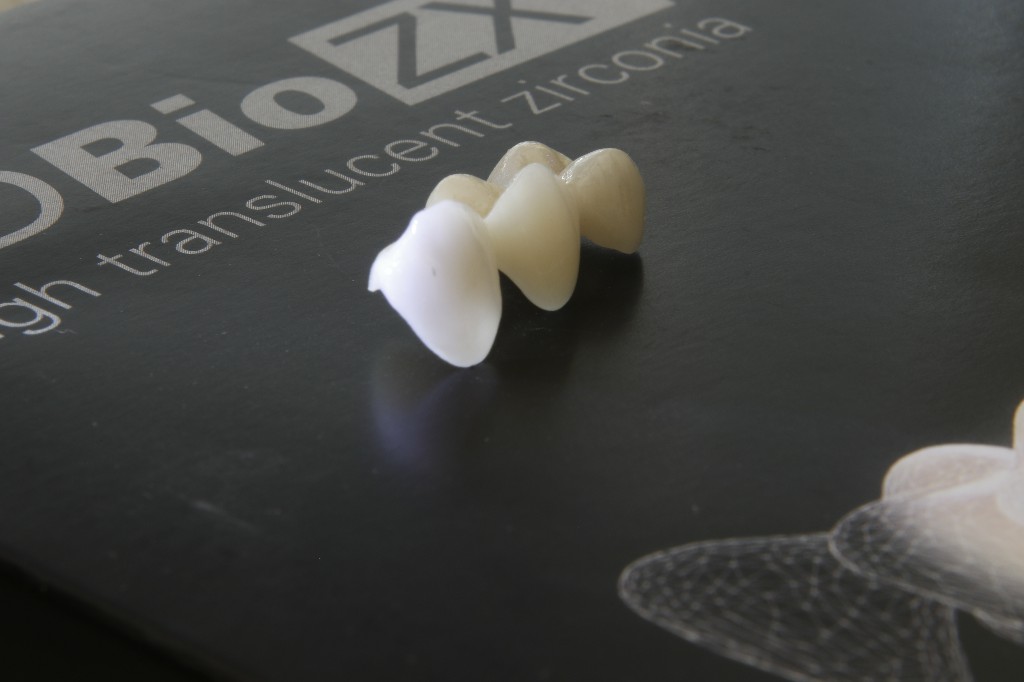




F.A.Q.
Is the replacement of teeth with dental implants a painful process?
Contrary to the most dental surgical procedures, replacement of teeth with dental implants is a painless process. It’s extremely rare for a patient to show signs (after the implementation and expiration of the anesthetic) of pain and discomfort of any kind.
It is of utmost importance to lower the temperature of the desired operating location (through the skin) with a cold compresses. This in return reduces post-procedure swelling, reduces the chances of bleeding and possibility of painful episodes later down the line. In most cases after the anesthesia wears off one tablet of analgesic is enough to counteract these side effects and it’s not that uncommon that no post-procedure pain-killer medication is required.
The area where the procedure was performed and the sutures must be regularly cleaned with a soft toothbrush for the purposes of a faster healing process as well as removing any unwanted food around the operating area, this is something we would like to emphasize to be of great importance and makes a huge difference.
What are the desired conditions for the replacement of teeth with dental implants?
Dental implants tend to be implemented in most to all cases where no medical counter-indications exist but there exists a need for a replacement of one or more teeth. This issue is most commonly solved with the aid of implants that stave the cases of complete toothlessness (Edentulism).
What are some of the advantages and disadvantages of implantological therapy?
The teeth replacement advantages with dental implants is that it’s not entirely necessary to “touch” the surrounding teeth. In the case of partial toothlessness or avoiding the preprocedural preparation on soft tissue in the cases of complete toothlessness.
Implants offer comfort and the patients gladly accept them and easily adjust to them.
Even in cases of complications it’s rarely the case with painful episodes and inflammations except if it’s a terminal stage of loss of the implant.
Some of the disadvantages of the implantological therapy is the inability of application in cases that are severely ill as well as considerable loss of the jaw bone where as the implementation requires rejuvenation of the lost jaw bone.
What is the expiration date of the replacement dental implants?
It is of utmost importance to emphasize that not one implantological therapy GUARANTEES A LIFE-LONG LONGEVITY. Common sense dictates that if an organism wasn’t able to maintain its own natural teeth the chances are minimal to non-existent that he/she will be able to maintain the foreign body (in our case the dental implants).
The guarantee can be only related to the dental implant itself as it’s made out of a titanium alloy and as such it is almost indestructible but to guarantee a life-long longevity is regarded as foolish. The success of the implantological therapy is measured on a five-year basis as long as the dental implant remains in the jaw bone. The success of this therapy in first five years is above 95% depending on many factors that relate to the number of dental implants that are implanted, their type, oral hygiene, the health of the remaining bone structure and many more.
Because of everything stated above, there is some logic in guaranteeing the entire implantological process up to five years. Every guarantee that wishes to extend that period walks a thin line with being pure speculation and guesswork despite the static data on the global level. However, it is not that uncommon for the dental implants to last over 10-15 years with impeccable oral hygiene and regular checkups.
How to maintain oral hygiene after the implantation of dental implants?
Without impeccable maintenance and oral hygiene the implantological therapy makes no sense. Bad hygiene is number 1 factor that leads to implant loss. Because of that, it is of very important to begin a process of maintaining your oral hygiene on day one after receiving a dental implant.
In maintaining oral hygiene both mechanical and chemical solutions are used. From your everyday toothbrush, dental floss, interdental brushes, oral irrigator, chemical solutions on the basis of chlorhexidine and so on…
More detailed instructions are given by our dentists before and after the implantological therapy.
What is required to begin the implantological therapy?
Before the start of every implantological therapy, it is absolutely necessary to conduct an examination of the current state of the remaining jawbone structure, remaining teeth as well as the general state of the patient.
The following step is a diagnostical method of 3D imagery of the jawbone(CBCT imagery) that allows us to gather more precise information of the remaining bone structure and determine its measure and quality.
It’s one of the most modern ways of analyzing the remaining jaw bone as well as anatomical structures.
3D CBCT image:

Are additional surgical procedures necessary during the implantological therapy?
It is not that uncommon to have a situation where before any replacement can be performed to have a procedure that prepares the area for the implantological therapy as it greatly increases the chances of a successful dental implant.
It’s highly common to have a need to recover some of the lost jaw bone with “artificial bone”.
We as an institution are highly capable of this and we track the most modern ways of restorative and bone regeneration process “GBR” as well as using the growth factors from your own blood derivate “PRF” (the patient blood is taken before the procedure)
In some situations, it’s necessary to perform a “sinus lift” to ensure available vertical space for the implant.
Fill out our questionnaire
Enter your information below and our staff will contact You
Other services:

Orthodontics
Orthodontics specializes in irregularities of teeth, their malposition and correction as well as jaw and facial irregularities.

Periodontology
Periodontology is dedicated to treating the supportive structure of teeth.

Oral surgery
Different kinds of surgical procedures within the dentistry field

Implantology
Implants are a permanent replacement for damaged or missing teeth

Family dentistry
Adequate dental procedures for patients of all ages
